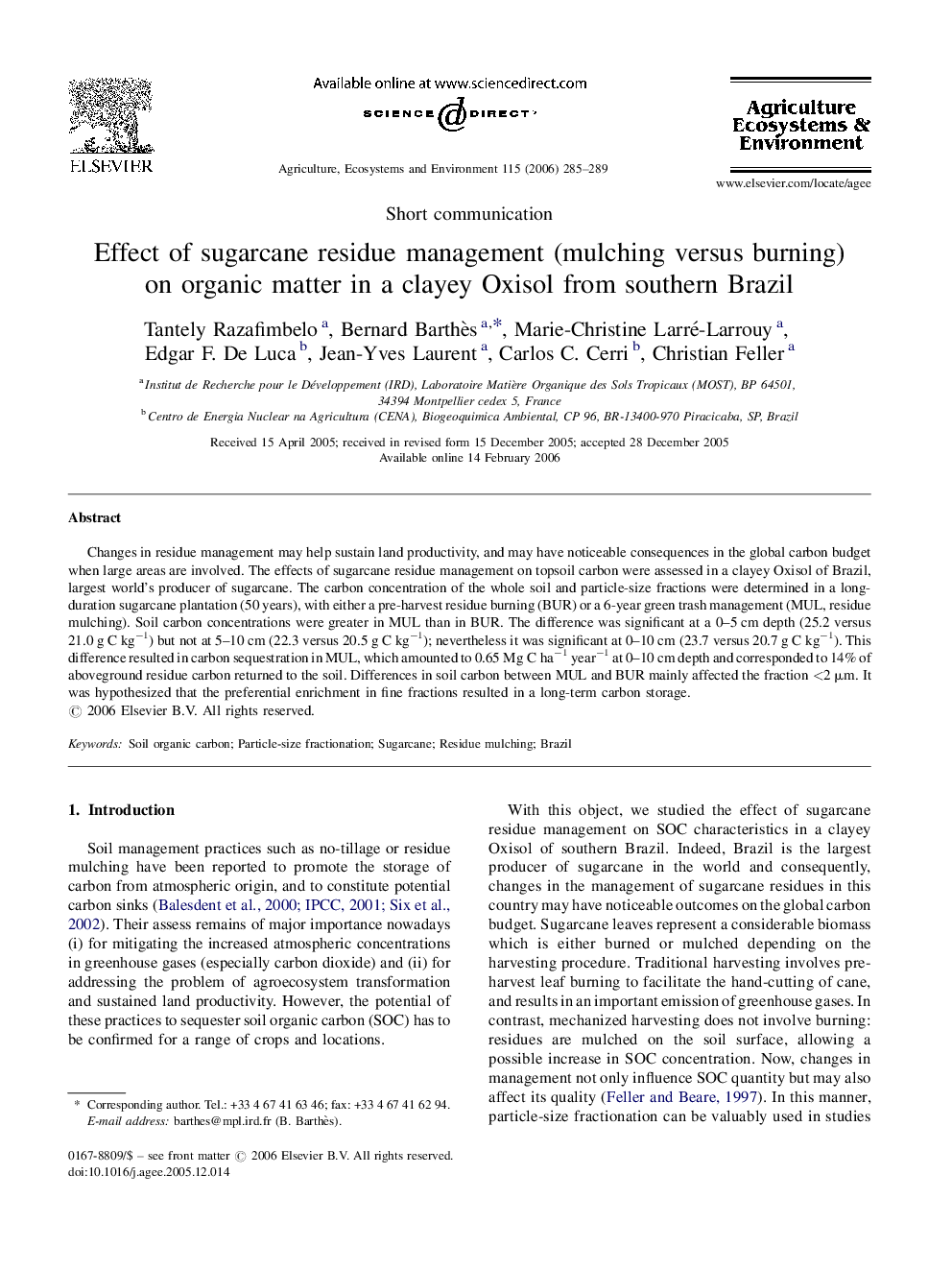| Article ID | Journal | Published Year | Pages | File Type |
|---|---|---|---|---|
| 2415902 | Agriculture, Ecosystems & Environment | 2006 | 5 Pages |
Changes in residue management may help sustain land productivity, and may have noticeable consequences in the global carbon budget when large areas are involved. The effects of sugarcane residue management on topsoil carbon were assessed in a clayey Oxisol of Brazil, largest world's producer of sugarcane. The carbon concentration of the whole soil and particle-size fractions were determined in a long-duration sugarcane plantation (50 years), with either a pre-harvest residue burning (BUR) or a 6-year green trash management (MUL, residue mulching). Soil carbon concentrations were greater in MUL than in BUR. The difference was significant at a 0–5 cm depth (25.2 versus 21.0 g C kg−1) but not at 5–10 cm (22.3 versus 20.5 g C kg−1); nevertheless it was significant at 0–10 cm (23.7 versus 20.7 g C kg−1). This difference resulted in carbon sequestration in MUL, which amounted to 0.65 Mg C ha−1 year−1 at 0–10 cm depth and corresponded to 14% of aboveground residue carbon returned to the soil. Differences in soil carbon between MUL and BUR mainly affected the fraction <2 μm. It was hypothesized that the preferential enrichment in fine fractions resulted in a long-term carbon storage.
